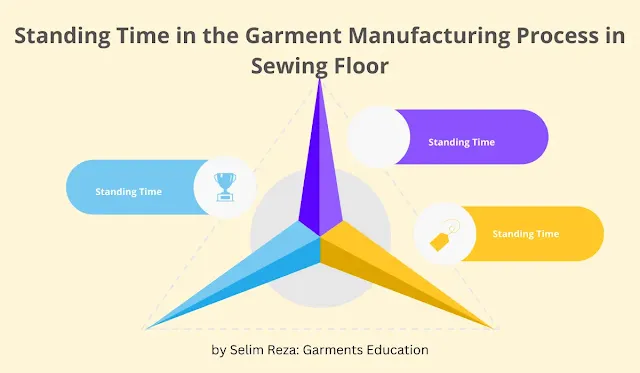What is Standing Time in the Garment Manufacturing
Standing Time in the Garment Manufacturing Process in Sewing Floor. In Garment Manufacturing, "Standing Time" refers to the idle time or non-productive time that occurs during the Sewing line Process. This period occurs when workers are not actively engaged in sewing or performing any productive tasks due to various reasons.
What is Standing Time in the Garment Manufacturing Process in Sewing Floor. Here are some common causes of standing time in a sewing line:
Waiting for Material: Workers may have to wait for the next batch of materials to arrive at their workstation. This delay can occur due to logistics issues, supply chain delays, or inefficient material handling.
Machine Breakdowns: If sewing machines or equipment malfunction, workers cannot proceed with their tasks until the issue is resolved. This downtime can significantly impact production efficiency.
Setup Time: Changing the sewing machine settings, replacing needles, or adjusting thread can take time between batches or when switching to different garment styles. This setup time is necessary but contributes to Standing Time.
Quality Control Checks: Periodic checks and inspections are essential to ensure product quality. Workers may need to pause their sewing tasks to allow inspectors to examine the garments.
Waiting for Instructions: Sometimes, workers may experience delays due to waiting for instructions, guidance, or clarification on the next steps in the production process.
Rest Breaks: Workers are entitled to rest breaks as per labor regulations. While these are necessary for worker well-being, they do contribute to Standing Time if they are not synchronized efficiently with the production flow.
What is Standing Time in the Garment Manufacturing Process in Sewing Floor. Reducing Standing Time is crucial for improving overall efficiency and productivity in garment manufacturing.
Techniques such as lean manufacturing principles, efficient line balancing, and continuous improvement initiatives are often employed to minimize idle time and maximize production output.




.png)
.png)



